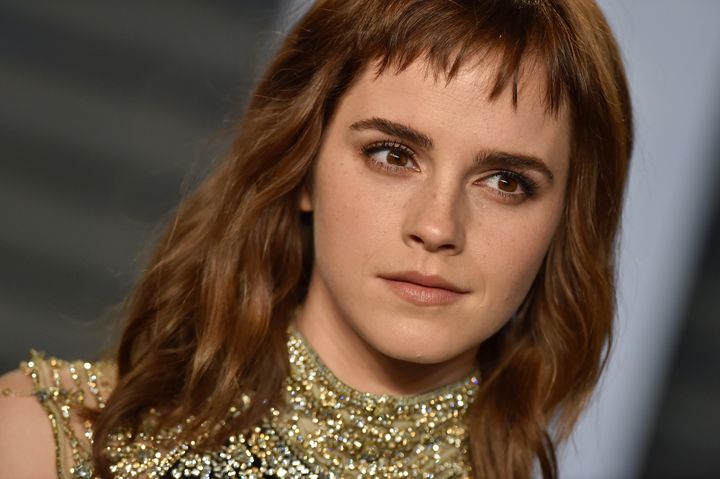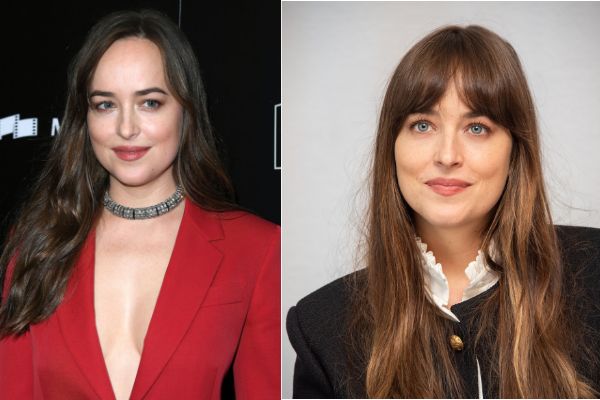The arrival of fall fashion season brings new opportunities to dabble in trending styles, test drive an entirely new aesthetic and once again revisit the question: Should I get bangs?
It’s a decision that most people with hair will eventually consider as a low-risk option for changing up an otherwise unremarkable haircut, but it can be surprisingly complicated. Bangs take effort — they usually have to be blown out or flat ironed, dry shampooed and trimmed frequently. They can get oily, they can cause acne, they don’t work for all hair types, and they’re a pain to grow out. Even impeccably styled bangs don’t look good on everyone, which some former bang-wearers unfortunately learn the hard way.
Whether or not someone decides to get bangs can depend on how much time they have, but possibly more importantly, how they feel about bangs as a lifestyle. Bangs are deeply divisive, and they stir up surprisingly strong feelings about whether anyone should get bangs, ever. Friends warn each other against getting bangs, a choice they’ll likely regret, and those who hate bangs really hate them.
“Bangs are the conclusion an 8-year-old would come to if asked to get their hair out of their face. It’s like if you wanted more light in your room, so you cut a hole in the curtain,” wrote Diana Tourjee for Vice in a piece called “Bangs Are Not An OK Hairstyle For Adults.” “Bangs very rarely look good on people, and never, ever look as good as long, middle-parted hair.”
Others argue that 2019 is the perfect year for bangs, which are an easy way to transform a look without a complete aesthetic overhaul.
In either case, getting bangs is never just about getting bangs. Bangs symbolize a certain type of woman, or the idea of a certain type of woman, and many of those ideas are based in complex gender politics and problematic pop culture archetypes dating as far back as the early 20th century.
“Bangs were part of the Dutch bob worn by little girls, and then by some flappers in the 1920s. You can see curled bangs on some 19th century stage stars, like Lily Langtry,” said Lois Banner, an author and feminist scholar. Banner told HuffPost that Hollywood icon Greta Garbo later cut her hair with bangs for a film role, heightening the hairstyle’s aspirational appeal.

“Throughout the 20th century, we’ve seen trends for fringes come and go,” said Rachael Gibson, creator of the popular Instagram @thehairhistorian. “The 1950s saw pin-up, preppy ponytails with bangs, as well as Audrey Hepburn-inspired sweeping styles, and the 1960s gave us Jane Birkin and cool, French-girl bangs. Even the Rachel cut featured long-layered swept bangs.”
As Monica Heisey wrote in a comprehensive history of bangs, it wasn’t until the “bang explosion” of the 2000s that “girl with bangs” would finally emerge as an aesthetic identity, even a personality, unto itself.
“Zooey Deschanel started a full, retro-bangs trend that hit pensive girls with poetry ambitions particularly hard and never looked back, becoming a shorthand for a particular kind of whimsical indie lady who owned vintage teacups and loved collage,” Heisey wrote. “In 2007 Kate Moss got blunt, thick, straight-across bangs and they became fully, properly cool. It is a scientific fact that between 2008 and 2009, 100% of women were at the very least considering getting bangs.”
Bangs were at once shamelessly girly, adorably quirky and impossibly cool — characteristics that also happened to define the “manic pixie dream girl” cliche that took hold of pop culture during this same time period. Unfortunately for Deschanel, her bangs and indie-girl aesthetic made her a symbol of the quintessential, overly twee manic pixie dream girl who was only as cute and quirky as men wanted her to be. Bangs became the cornerstone of a specific aesthetic for a specific type of woman who was easy to hate. She either tried too hard to be cute, or was so impossibly attractive that she made a hairstyle for kids look cool.

Rightfully criticized for being a tired trope based on male fantasies, the manic pixie dream girl eventually faded from popular consciousness, but bangs never lost their unfortunate reputation. Tiny, close-cropped baby bangs once found primarily on art school students and French indie film stars are now known as “TERF bangs” — referencing the internet term “trans-exclusionary radical feminist” — and are presumably a popular style among that specific type of annoying white person. Not all TERFs have TERF bangs, and not everyone with tiny bangs is a TERF, though their association with a hateful ideology essentially ruins tiny bangs for everyone who isn’t a TERF.
On the internet, bangs have not only become a semi-political meme but also an analogy for mental health status. “Personally I believe wanting bangs is almost never about wanting bangs and if u want bangs u should go to therapy first,” writer Allie Wach tweeted back in 2018.
Bangs are loaded with so much meaning, and so many cultural ideas about the type of women who wear bangs, that getting them can signal an identity crisis — like the kind that follows a particularly terrible breakup. It’s unclear when or where “breakup bangs” first originated, but they’ve become the cliche symbol of desperation and post-breakup mental health breakdowns. “Are You Emotionally Stable Enough To Get Bangs?” asks a satirical New Yorker headline from 2018, playing into the well-established idea that bangs happen when women with poor impulse control are left alone with a pair of craft scissors.

Though the breakup bangs meme isn’t necessarily meant to be an indictment of a woman’s mental health, it’s funny because it’s true. For many women, hair is an extension of identity, and cutting it off can feel like shedding an old persona that just doesn’t fit anymore. Seemingly countless blog posts describing the ”emotional stages of getting bangs” reveal fears of judgement, or being perceived as someone without any real personal or aesthetic identity. Bangs can be cathartic, and they can result from a mental health crisis, but it’s worth examining why it’s so easy to joke about and pathologize emotionally unstable women. Plenty of women have had to live with bad haircuts they gave themselves at 3 a.m. during a panic, and there’s nothing wrong with that.
“With every kind of bangs from history on offer, you just have to decide what kind of girl you want to be,” Heisey writes. Women who get bangs — and the kinds of women who get bangs — are much more complex than they seem. Bangs represent a variety of different identities, many of them aspirational figures and projections of who women might want to be, but they don’t always have to be a metaphor for an emotional state or flimsy sense of self.
Beauty and style are deeply entwined with gender ideals and cultural perceptions of who women should be, but hair shouldn’t always have to mean something. It’s OK to just let bangs be bangs.
